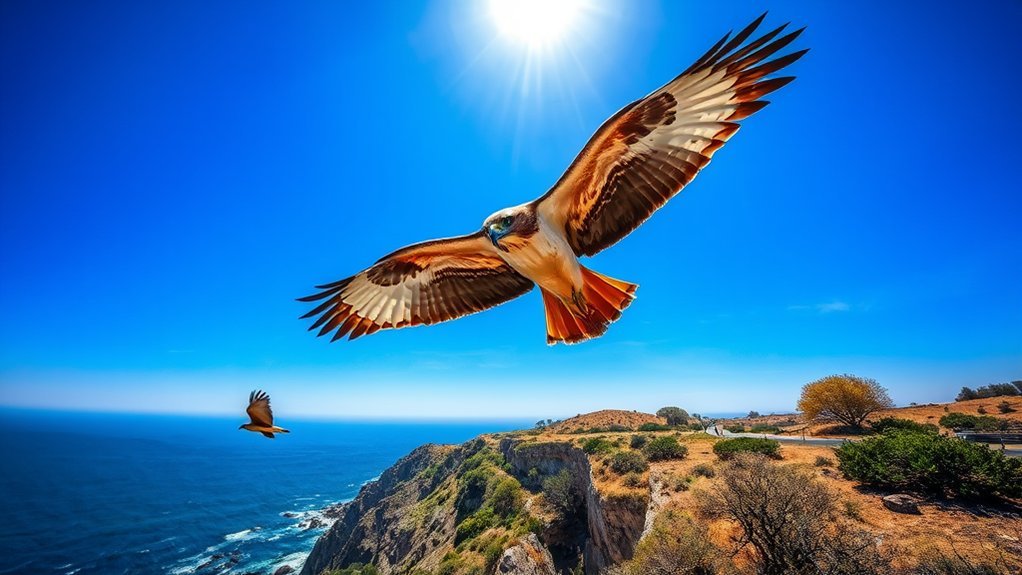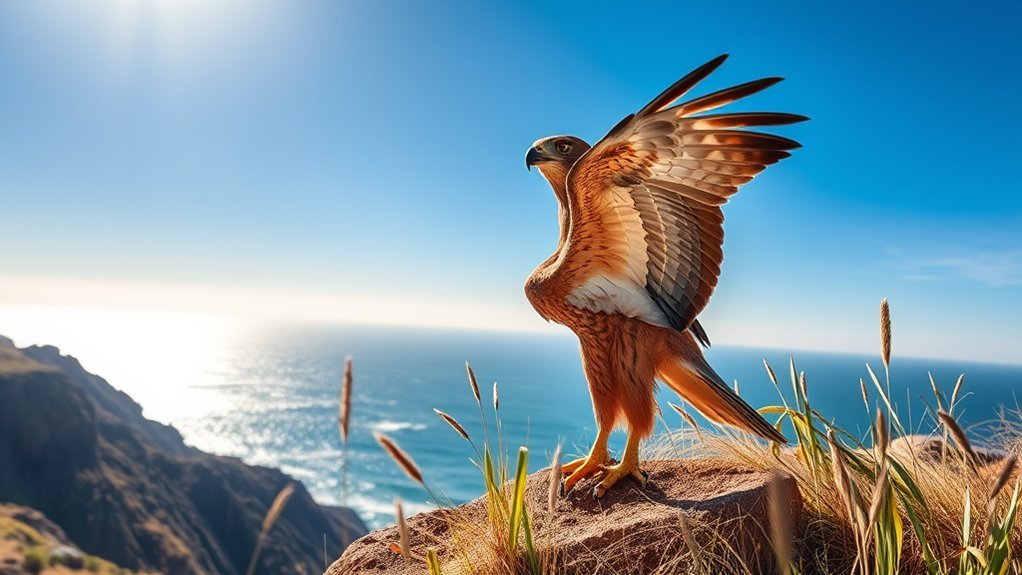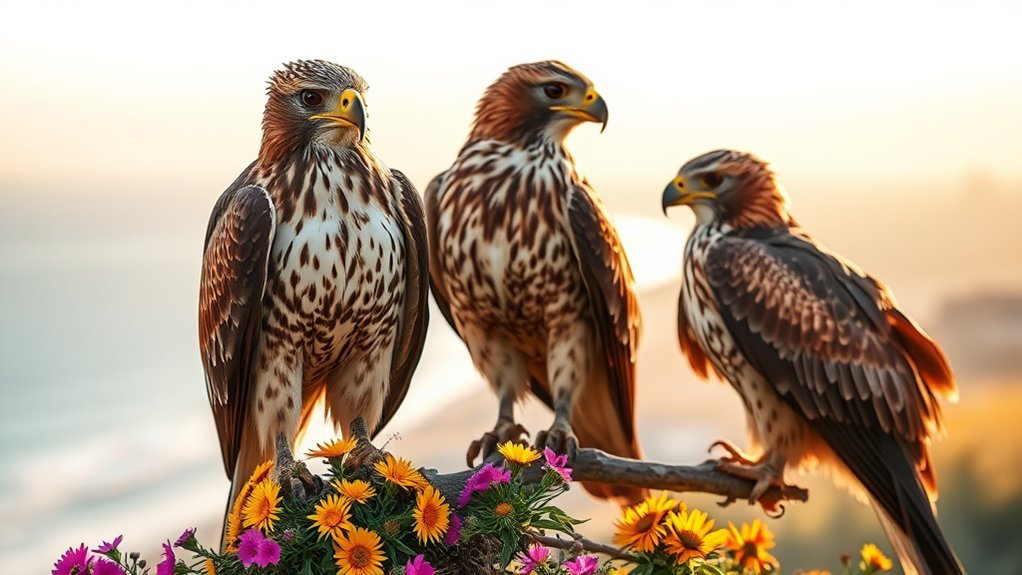Hawks in San Diego: Identification and Behavior Guide
When observing hawks in San Diego, it is important to recognize the different species you may see. The Red-tailed and Sharp-shinned Hawks have clear differences in size and behavior. Knowing their unique features will help you identify them easily and understand their hunting methods and habitats.
To spot these raptors in action, look for open areas where they hunt. Pay attention to their flight patterns. The Red-tailed Hawk is larger and often soars in circles while searching for food. In contrast, the Sharp-shinned Hawk is smaller and may dart through trees while chasing prey. Observing their behavior in these ways will increase your chances of a successful sighting. Enjoy your time observing these magnificent birds!
Key Takeaways
Common hawks in San Diego include the Red-tailed Hawk and the Sharp-shinned Hawk. You can identify Red-tailed Hawks by their larger size and rust-colored tail. In contrast, Sharp-shinned Hawks are smaller and skilled at hunting small birds.
Hawks use different hunting techniques like soaring and stealth. They rely on their sharp eyesight to find prey during the day. Hawks return to the same nesting sites each year. They engage in mating rituals and build nests with sticks for comfort.
For the best chance to observe hawks, visit open fields early in the morning or late in the afternoon. Bring binoculars to get a better view. Enjoy watching these fascinating birds in their natural habitat!
Common Hawk Species in San Diego

Although you mightn't immediately associate San Diego with hawks, several species thrive in this diverse environment. Among them, the red-tailed hawk is particularly prominent, often spotted soaring above open spaces or perched on high vantage points.
Its distinctive rust-colored tail, especially visible in flight, makes it a favorite among birdwatchers. On the other hand, the sharp-shinned hawk, smaller and more elusive, can be found darting through dense forests and urban areas, adeptly hunting smaller birds.
Understanding these species enhances your connection to nature and supports the idea that anyone can appreciate the beauty and complexity of wildlife in San Diego.
Observing these hawks not only enriches your experience but also strengthens your bond with this vibrant ecosystem.
Identifying Hawks by Size and Colorations
When trying to identify hawks in San Diego, paying attention to size and coloration is essential. Different species exhibit notable size variations; for instance, Red-tailed Hawks are larger, while Sharp-shinned Hawks are more petite. A good way to distinguish them is by observing their wing span and body length.
Color patterns also play a critical role in identification. Many hawks display striking contrasts, such as the dark brown plumage of the Red-shouldered Hawk versus the lighter coloration of the Cooper's Hawk.
Look for distinctive markings, like tail bands and facial stripes, which can provide further clues. By focusing on these specifics, you'll become more confident in identifying the hawks soaring through the skies of San Diego.
Hawk Behavior: Hunting and Feeding Habits

Understanding hawk behavior, particularly their hunting and feeding habits, is essential for anyone interested in birdwatching or simply observing these magnificent birds in San Diego.
Hawks exhibit various hunting techniques, like soaring high to spot prey or using stealthy approaches from perches. They often rely on keen eyesight to detect small mammals, birds, and reptiles, showcasing their adaptability.
As for feeding preferences, many hawks prefer live prey, while others may scavenge opportunistically. Some species, like the Red-tailed Hawk, tend to hunt during the day, making them easier to observe.
Nesting and Breeding Patterns
Nesting and breeding patterns of hawks reveal much about their life cycle and adaptability to their environment. Observing these behaviors can deepen your connection with these magnificent birds.
- Hawks typically return to the same nesting sites year after year.
- Their mating rituals include aerial displays and vocalizations that strengthen pair bonds.
- Nest construction involves sticks, lined with softer materials for comfort.
- Eggs are usually laid in late winter or early spring, orchestrating the timing of food availability for chicks.
Understanding these patterns helps you appreciate hawks' resilience and ability to thrive in diverse habitats.
Tips for Observing Hawks in Their Natural Habitat

Observing hawks in their natural habitat offers a unique opportunity to witness their impressive behaviors and interactions within the ecosystem.
To enhance your experience, aim for early morning or late afternoon—these are the best observation times when hawks are most active. Seek out ideal locations such as open fields, canyons, and coastal cliffs, where these birds often hunt or roost.
Bring binoculars for closer views of their striking features and behavior. Silent observation is essential; sudden movements or loud noises can easily frighten them away.
Consider using a notebook to record your findings and share your experiences with fellow enthusiasts. This connection fosters a sense of belonging within the community of hawk watchers while deepening your appreciation for these magnificent birds.
Frequently Asked Questions
What Time of Year Are Hawks Most Active in San Diego?
In San Diego, hawks are most active in spring and early summer during their breeding season. They hunt more frequently as they look for food to feed their young. This time of year is ideal for birdwatchers because spotting hawks becomes easier and more rewarding.
Do Hawks Migrate From San Diego to Other Areas?
Yes, many hawks migrate during the winter months. In San Diego, some hawks stay for the winter, while others migrate south for warmer weather. Different species of hawks can be seen at various times throughout the year. This shows that hawks have different behaviors regarding migration.
How Can I Attract Hawks to My Backyard?
To attract hawks to your backyard, set up wildlife feeders that provide small animals. Keep nearby natural habitats intact. This encourages hawks to visit and hunt. By creating this environment, you can enjoy watching these beautiful birds in action while supporting local wildlife.
Are There Any Hawk-Watching Events in San Diego?
Yes, San Diego hosts several hawk-watching festivals organized by local birding groups. These events allow you to meet other bird lovers and watch hawks in their natural surroundings. It is a fun and engaging experience!
What Should I Do if I Find an Injured Hawk?
If you find an injured hawk, contact local wildlife rehabilitation centers right away. They can help the bird and provide the necessary care. Your fast response can make a big difference in the hawk's recovery and chances of survival.

Kashvi is a passionate bird enthusiast and nature lover who has been fascinated by the world of birds for years. With a keen eye for detail and a love for learning, Kashvi is dedicated to sharing her knowledge and insights with fellow bird enthusiasts on Avian Enthusiasts. Through her engaging and informative articles, Kashvi aims to inspire others to join her in exploring the fascinating world of birds and to promote a deeper appreciation for these incredible creatures.







